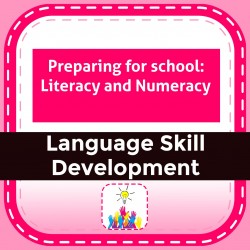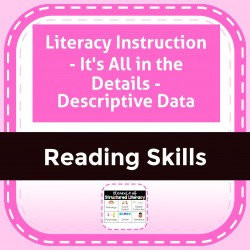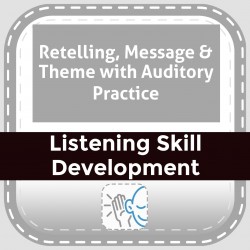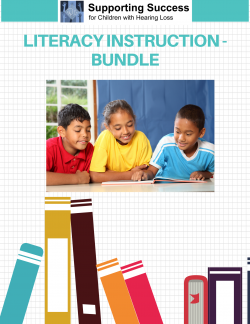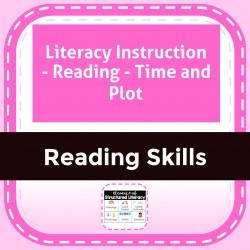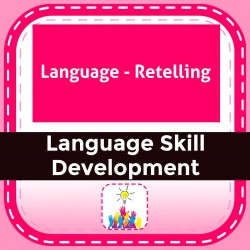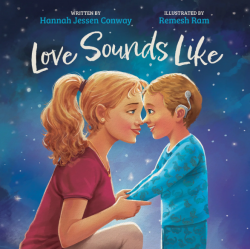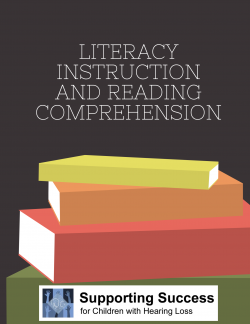Ability Levels
Categories
Resource Types
Age/Grade Range
CCSS
Anchor Standard
Speaking & Listening
Language
Reading
Preparing for school: Literacy and Numeracy
$ 6
Age-appropriate listening and language skills are required for any child to succeed at school. At school, more advanced developmental skills, namely literacy and numeracy skills, are developed. A pare
...
nt can already start to introduce basic literacy and numeracy concepts to a child as of birth. Parents do not always realize that preparing the child beforehand to learn each of these skills, is vital. Before children go to school, they need to acquire certain skills that will help them to read and write. This is the joint responsibility of the parents and the child’s educational team, such as the teacher of the deaf/hard of hearing, early intervention provider, speech-language therapist, and/or preschool teacher.Emergent literacy: Before teaching reading and writing skills, a child needs to know the processes and concepts involved in reading and writing. Emergent literacy skills discussed in this lesson include literacy socialization, phonological awareness, as well as printed word and alphabet knowledge. Reading is the process through which meaning is attached to written symbols and letters. It is about comprehending and actively responding to the content.Writing is the use of symbols to communicate thoughts and ideas. It is a way to represent language in a visual and tactile form. The development of the different components of emergent literacy, reading and writing is discussed in this lesson.
Literacy Instruction - It's All in the Details - Descriptive Data
$ 195
The most important reading skill is determining the main idea of a passage. Closely linked to this is the understanding of supporting details. Supporting details clarify and expand understanding of th
...
e main idea. These pages give instructional strategies for teaching descriptive detail. Activities include passage analysis, recognizing personification, identifying descriptors, and writing job descriptions using adjectives.
Retelling, Message & Theme with Auditory Practice
$ 295
Students demonstrate auditory comprehension of text that is read to them by retelling and/or identifying message or theme. Suggests questions about student's listening skills to consider when planning
...
instruction. Includes retelling wheel, rubric, retelling prompt cards, common message/moral/theme cards, 2 international folk tales, activities responding to Casey at the Bat with suggestions for extending learning.
Literacy Instruction - BUNDLE
$ 795
This bundle includes instructional strategies for literacy instruction beginning with print awareness to reading comprehension. The 5 components of literacy are discussed in detail, and activities ar
...
e included, many for all levels of instruction. 48 pages. Includes ID numbers: 0971, 0972, 0980, 0982, 0983, 0985, 0986, 0987, 0988.
Literacy Instruction - Reading - Time and Plot
$ 195
Understanding ‘time’ plays a key role in comprehension of each element of literature. Time marks the movement of action within the story. It also marks changes within the story. These instructional s
...
al strategies focus on character's feelings and how they are related to behaviors, conflict, and action in the story. Activities include identifying transition words that indicate movement of time, sequencing characters' actions within the story, writing sentences with transition words, and using tense markers.
DHH Social Story: When My Nose Runs
$ 450
Additional Comprehension ActivitiesReading Comprehension QuestionsLists of tier 1 + 2 related vocabGame board to make it fun or help that wiggly off-task child stay focusedNew Concept for Older Kids:
...
What are “endonyms”This is a story to help children/students who wear hearing aids understand why they may go to the doctor and/or ENT more often than others. The story can be read for comprehension. It teaches new vocabulary and creates a wonderful language opportunity for students to better advocate for themselves at school, home, and the doctor/ENT office. This story was written with younger children and their families and older students who continue to come to school with blocked hearing aids and do not use an interpreter for language access.Service Activity for EI-ECSE Families & Home VisitsFor any family this story can be an important conversation starter, or reminder, to understand the language impact of even partially clogged hearing aids for their kid(s) who are not using signs. This can be demonstrated to parents by using a listening tube when their child’s hearing aid is plugged and cleaned and then having them listen again to the difference in clarity of language coming through the hearing aid to their child’s brain.Story Printable OptionPrint each two-page spread in landscape mode OR - Print a two-page spread but cut apart pages to show 1 page at a time. Spiral bind, 3-hole punch, or staple.Interactive Digital OptionPresent the book on a device or overhead projector. To play the digital version of the game click on the digital spinner link. Change the spinner to “3” numbers. Pick & move game pieces (pink, green, blue)QuestionsUse professional judgment when deciding on which comprehension questions to ask the student. *The advanced questions are marked with an * following the number.VocabularyTier 1 vocabulary Tier 2 vocabulary prefix Endonyms short nonfiction passage Endonym Activity Options ask students to research endodyms related to sick words show sick examples and ask them to find more
Language - Retelling
$ 295
Explanation to parents and teachers about the importance of retelling and sequencing events. Worksheets include: sequencing stages of a butterfly, retelling events of the school day, finding the begin
...
ning, middle and ending of a story, fiction and non-fiction reader response forms.
Love Sounds Like (Activity Pack)
$ 0
Love Sounds Like is a rhyming read-aloud that features a heartfelt conversation between a hearing mother and her deaf son about how love is much more than a sound – you can see, smell, taste, and touc
...
ouch it, too! In the free, accompanying activity pack, little readers can go on their own journey of the senses by writing or drawing how they experience love through the five senses. The activity pack also includes discussion questions, opportunity to practice a few simple signs, and the American Sign Language alphabet.
Literacy Instruction Reading Comprehension
$ 195
Reading comprehension is the process of combining thinking with text to construct meaning from written language. Instructional strategies and activities including accessing prior knowledge to, questi
...
oning, inferring, visualizing, summarizing, and synthesizing.
 Your browser is out of date. For best experience switch to latest updated Browser.
Your browser is out of date. For best experience switch to latest updated Browser.
 Get Chrome
Get Chrome Get Edge
Get Edge Get Firefox
Get Firefox